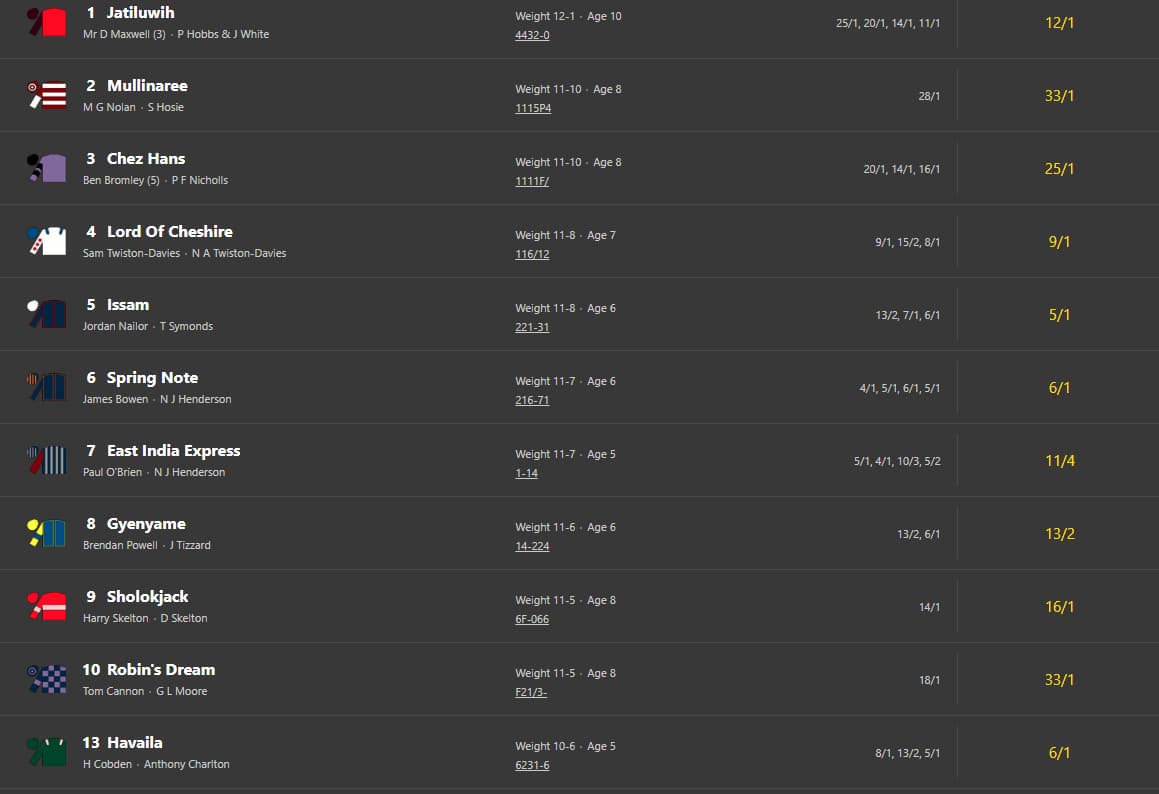Betting Odds Explained – How Odds Work
All sports fans need to have betting odds explained to them at some point. Betting odds themselves are numbers that tell you how much a bookmaker will pay you if a bet on a particular outcome wins.
In this guide, we’ll tell you how to use betting odds to calculate implied probabilities, how to read and understand fractional, decimal and American odds, and how to convert fractional odds to their decimal equivalents.
Why Betting Odds Are Important
Betting odds are so important in the world of sports betting that it’s virtually impossible to bet sensibly without understanding them. Why do we say that? Here are just three good reasons:
- No matter how they are presented, betting odds provide all the information you need to calculate your potential profit from a bet before you’ve placed it. If you don’t calculate your potential profit, you won’t know whether or not it makes sense for you to bet in the first place.
- Bookmaker odds can be used to calculate implied probability. The resulting probability figures will tell you how much confidence the bookmaker has that any given outcome in an event will take place. The higher the implied probability of an outcome, the more confident he is about it.
- When you understand betting odds you will be able to take a more rational approach to making money as a sports bettor. For example, you’ll be able to practice the strategy of value betting, which involves being able to tell what are good odds and what aren’t.
What is Implied Probability?
We mentioned a moment ago that betting odds give you all the information you need to calculate how much confidence a bookmaker has about a particular outcome taking place. That confidence is usually referred to as implied probability, and it’s expressed as a percentage.
Implied probabilities can be useful because they can help you decide whether or not you want to make a bet on a particular outcome.
For example, if a horse racing bookmaker offers odds of 9/1 about a runner in a race of eight runners, a betting newbie might think that’s a good price. But the implied probability of a 9/1 shot is 10%. That means the bookmaker gives that particular runner a roughly 10% chance of winning. So there’s a 90% chance that one of the other runners will win instead!
We’ll remind you right here that implied probability figures are just that. They aren’t factual certainties that are always accurate. But if a betting site believes that a horse only has a 10% chance of winning – and it has a whole team of professional odds-makers employed to arrive at that number – then you’d better have a very good reason to disagree before betting.
Implied Probability Chart of Common Odds
For readers of this Betting Odds Explained guide who want easy access to implied probability figures for common odds, the table below should prove useful. It isn’t exhaustive by any means. But it doesn’t have to be. If you want to know the implied probabilities of any other odds, you can calculate them for yourself. We’ll show you how to do that in the next section of this guide.
Fractional Odds
Decimal Odds American Odds Implied Probability % 1/5
1.20 -500 83.33 1/4 1.25 -400 80.00
1/3
1.33 -300 75.02 2/5 1.40 -250 71.43
1/2
1.50 -200 66.67 4/7
1.57 -175 63.65 4/6 1.66 -150 59.99
4/5 1.80 -125 55.56
10/11
1.90 -110 52.38
1/1
2.00 -100 50.00
11/10
2.10 +110 47.62
5/4
2.25 +125 44.44
6/4
2.50 +150 40.00
7/4
2.75 +175 36.36 2/1 3.00 +200 33.33
5/2
3.50 +250 28.57 3/1 4.00 +300 25.00
4/1
5.00 +400 20.00
5/1 6.00 +500 16.67
How to Calculate Implied Probability Using Betting Odds
Ready-reckoner charts such as the one we’ve just presented can be very handy. But what if you want the implied probability for sport betting odds that aren’t on the chart, such as 8/13 or 13/8? In that case, you’ll need to calculate it for yourself. That might sound daunting, but it’s a lot easier than you might think, as we’ll now explain.
We’ll use fractional odds here because an example of how to do this with decimal odds can be found in our guide to Value Betting. With fractional odds, the formula to calculate their implied probability is:
(D divided by (N + D)) x 100
D represents the denominator of the fraction, which is the number on the right-hand side. N represents the numerator, which is the number on the left-hand side. So if we wanted to work out the implied probability of 8/13, our calculation would be:
(13 divided by (8 + 13)) x 100
= (13 divided by 21) x100
= 0.6190 x 100
= 61.90%
See – we told you it was easy.
How to Read Betting Odds
Being able to read betting odds is something that develops naturally over time. But if you want quick answers to questions like, ‘What do odds mean?’ and ‘How do odds work in betting?’ we’ll provide them right here.
Regarding fractional odds, the left-hand side of the fraction tells you how many units of profit you will win if you bet the number on the right-hand side of the fraction. Using 8/13 as an example once again, if you stake £13 on a bet and the bet wins, you’ll win £8 in profit. Of course, you’ll also get your stake back.
The betting odds meaning is therefore quite easy to read when you know what you’re looking for. We have to point out, however, that this is an example of betting odds explained UK style. When you’re trying to read decimal or American odds, different rules apply. And we’ll discuss those shortly.
For now, every time you see fractional odds, remind yourself that if you were to stake the right-hand number, a winning bet would yield a profit equal to the left-hand number.
How Do Fractional Betting Odds Work?
Fractional odds are the most common in the UK, although decimal odds are catching up fast. Our discussion up to this point has explained much of how fractional betting odds work.
But you’ll have noticed that if you just view the right-hand side of the odds as your stake and the left-hand side of the odds as your profit, some odds just don’t look fair. Especially to those who are new to betting. With odds of 2/5, for example, a beginner might think: ‘Stake £5 to win £2. Wait, what? So I’d lose £3? On a winning bet?’
Of course, that isn’t the case at all. What you always need to remember about fractional odds is that they don’t give you the total amount that the bookie will add back to your account if you win. They only tell you how much profit you’ll make.
When you make a winning bet, the bookmaker will give you your profit PLUS your returned stake. If you want to calculate the total amount that you’d get back from the bookie if your bet wins – a sum referred to as your return – you need to add the stake on top. 2/5 would therefore give you £2 profit plus you £5 back, for a total return of £7. Which is much better.
What About Different Sized Bets?
There will be plenty of times when you want to bet a sum that’s different to the right-hand side of the odds. To calculate your total return for any bet at any fractional odds, the formula is simple:
((N divided by D) + 1) x S
Where N is the numerator, D is the denominator and S is how much you intend to stake in pounds.
For example, if you like to bet on tennis and you want to stake £10 on your favourite player at odds of 11/8, you would calculate:
((11 divided by 8) +1) x 10
= (1.375 +1) x 10
= 2.375 x 10
= £23.75
Your £10 would therefore get you a total return of £23.75, which is a profit of £13.75.
How Do Decimal Betting Odds Work?
With traditional UK betting odds explained we can now turn our attention to decimal or European betting odds. The good news is that these are a whole lot easier to understand. And that’s because, as their name suggests, they’re written as decimal numbers, such as 1.75, 3.50 and 5.00.
These numbers tell you how much you can expect to receive back from the bookmaker – including your stake – if your bet wins. Decimal odds pertain to a stake of 1 unit, so you can multiply them by whatever stake you like to get your own personal return figure.
For example, you might be thinking about betting £15 on a football team to win a match at decimal odds of 2.25. In that case, you’d multiply the odds of 2.25 by your stake of £15 to discover that your total return – should the bet win – would be £33.75.
Should you ever want to calculate the pure profit element of a bet, all you have to do is deduct 1 from the decimal odds before multiplying by your stake.
For example, if you wanted to calculate the potential profit from a £15 at odds of 2.25, you would deduct 1 from the odds, giving you 1.25. Multiply by 15 and the profit element alone would be worth £18.75.
Decimal odds are just as common at online betting sites in the UK as fractional ones. And many sites present odds in decimal format by default for the simple reason that it’s the most user-friendly format of all. Especially for beginners, who won’t have already become familiar with fractional odds at traditional betting shops or racecourses.
How Do American Odds Work?
American odds (also referred to as moneyline odds) are probably the strangest from the perspective of a bettor in the UK. At first glance, they might look just as complicated as fractional odds. But again, they’re easier to understand and work with than most people initially think. And it’s important to take a little time to familiarise yourself with them because they’re very common online. Particularly so in the most popular sports in the US, such as American football.
These odds are presented with either a minus symbol or a plus symbol.
When they are shown with a minus symbol, the number that follows tells you how much you would need to stake to make a profit of £100. For example, odds of -125 means that you’ll make a profit of £100 for every £125 staked.
When American odds are shown with a plus symbol, the number that follows tells you how much profit you would make if you were to stake £100. For example, odds of +150 means that you’d make £150 in profit for a stake of £100.
Of course, as with fractional odds, you won’t usually want to stake the exact amounts that American odds show. To calculate your profit for any stake size, the formula is:
(S divided by AS) x W
Where S is the stake you want to use, AS is the American odds stake and P is the American odds profit figure.
For example, if you wanted to bet £15 at odds of -125, you would calculate:
(15 divided by 125) x 100
= 0.12 x 100 = £12 profit
Similarly, for a £15 bet at odds of +150, the profit calculation would be:
(15 divided by 100) x 150
= 0.15 x 150 = £22.50 profit
As you can see, American odds are far less complicated than they look. Just remember that a minus figure represents your stake for a win of £100, and a plus figure represents your win for a stake of £100
How to Convert Fractional to Decimal Odds
When you visit an online betting site you will normally be able to view betting odds in a fractional or decimal format, as you prefer. Sometimes, however, you might find yourself in a position where you need to convert fractional odds to decimal odds yourself. In that case, all you have to do is divide the numerator (left-hand side number) by the denominator (right-hand side number) and add 1.
For example, to convert 8/13 into decimal you would calculate:
8 divided by 13 = 0.61
0.61 + 1 = 1.61
Similarly, to convert 100/30 into decimal you would calculate:
100 divided by 30 = 3.33
3.33 + 1 = 4.33
And that’s all there is to it!
Conclusion
The question ‘How do odds work?’ is a very common one. And we trust that we’ve answered it to your satisfaction. But knowing how betting odds work is just the first step. The next is to develop confidence in your ability to read, use and work with betting odds in daily life. That’s something that will take a little time and practice, so be patient with yourself and don’t be afraid to return to this guide if you ever need a refresher.
FAQ
How do betting odds work?
Betting odds work by providing information about the expected profit for a given or assumed stake. For example, fractional odds of 8/13 tell you that you’ll make £8 in profit for every £13 that you stake if your bet wins.
How do you read betting odds UK?
When you have learned how to understand betting odds, as detailed in this guide, you’ll find it quite easy to read them. Of course, becoming a fluent reader of betting odds is something that takes a little time and practice.
What does 3 to 1 odds mean?
The phrase ‘3 to 1’ is simply how we pronounce the fractional odds of 3/1 in spoken communication. This means that you’ll make £3 in profit for every £1 staked if your bet wins. Similarly, the phrase ‘11 to 8’ would refer to fractional odds of 11/8.
How do you explain odds in betting?
Probably in a similar way to how we’ve done it in this UK Betting Odds Explained guide. If you need to explain odds to someone, start by telling them what the numbers represent. Then take them through a real-world example or two so that they can see how odds work in practice.
Ian Bruce joined Safest Betting Sites in 2024 as Senior Sports Editor to oversee the quality and usefulness of its gambling content. He originally developed an interest in betting after landing a winning Yankee on his first attempt. He then spent years figuring out how to replicate that success. Along the way, he became one of the UK’s leading writers on the topic of betting and gaming. Ian’s career has now spanned more than three decades, and his enthusiasm for systematic and responsible betting hasn’t waned one bit. However, his preferred approach to winning these days is Dutching, for the simple reason that “It’s a lot easier than landing Yankees.”
Latest Sign-Up Offers
9.522/04/249.505/04/249.715/04/249.522/03/249.502/04/24





